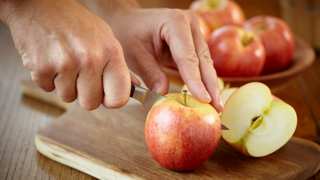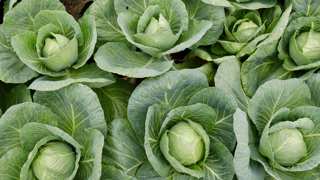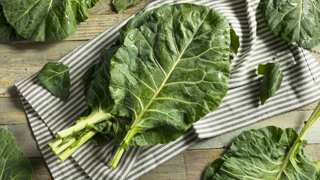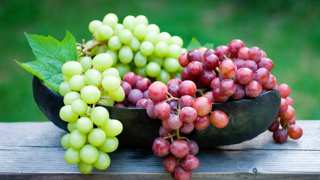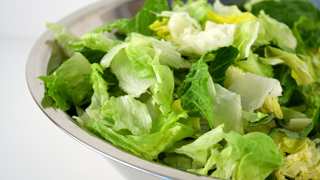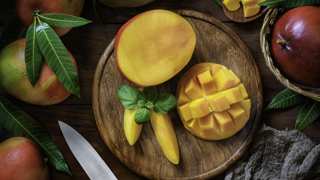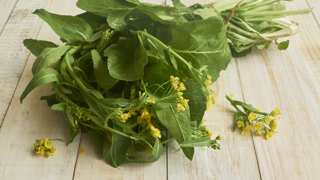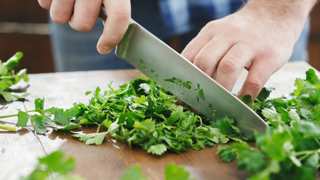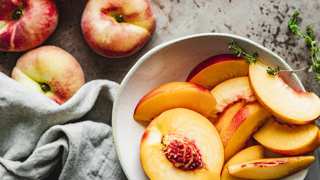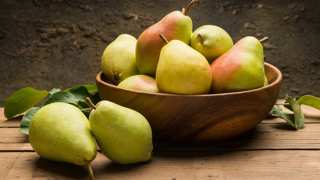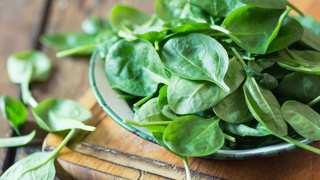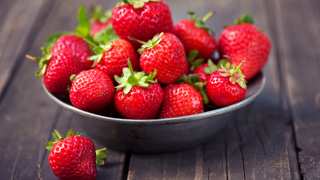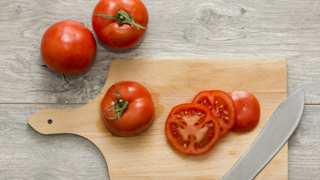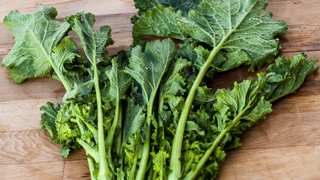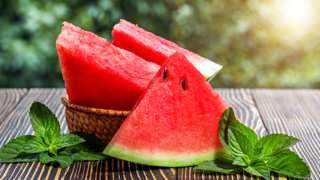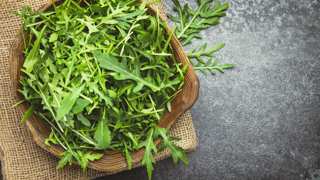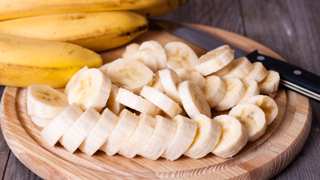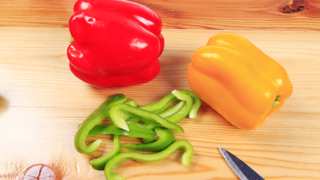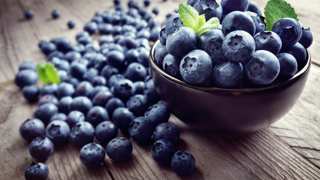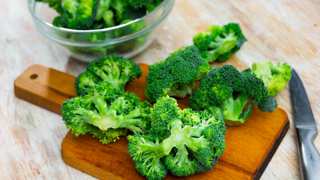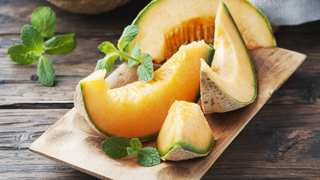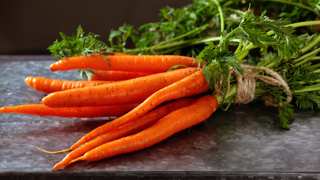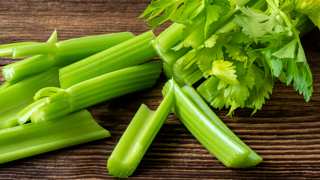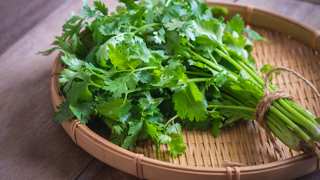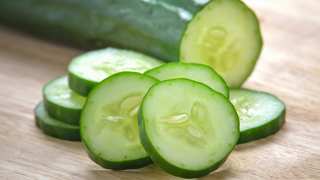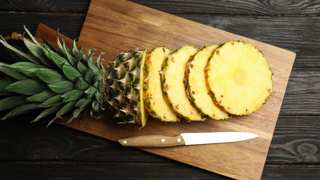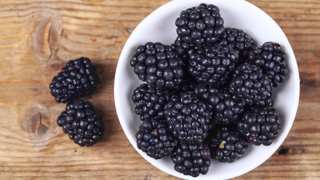Fruit and Vegetable Basics
Owners are responsible for ensuring their bearded dragon's diet is healthy. Like people, beardies can be picky eaters so it is up to you to make sure their diet is nutritious.
Diet by Age
Adult bearded dragons will eat more fruit and veggies than younger beardies. This is because juvenile bearded dragons are growing and need a diet that is higher in protein and fat. The table show how the diet needs change by age.
Preparing Fruits and Veggies
Fruits and vegetables should be prepared correctly before they are fed to your beardie. Foods that are too large can cause digestion issues and increase the risk for impaction. You should cut any fruits, vegetables, and greens so the food is smaller than the distance between the beardies eyes (length, width, and height).
Some veggies may need to be cooked to make them easier to digest. Any cooked foods need to be cooled to room temperature before feeding them to your bearded dragon.
How to Identify Healthy Fruits & Vegetables
Some people may assume all fruits and vegetables are healthy, however that's not always true with bearded dragons. Keep in mind that the bearded dragon's natural habitat is dry and desert regions in Australia. So despite the fact they are omnivores their bodies have adapted to a diet consisting of food found in those regions. Below are some quick nutrition guidelines to help you identify foods which should not be a regular part of your beardies diet.
Oxalates and Oxalic AcidOxalates are produced by plants to help regulate and remove excess calcium. When plants high in oxalates are consumed by bearded dragons the oxalic acid will bind to calcium in the digestive track and prevent it from being absorbed. In other words, foods high in oxalates will reduce the amount of calcium bearded dragons can absorb. Foods containing more than 10mg of oxalates are considered high and should not be a staple food for your bearded dragon. Not all plants/vegetables contain high oxalates, but some of the highest levels are found in spinach, eggplant, mushrooms, and rhubarb.
Below are some quick guidelines regarding oxalates (note: the oxalic measurement is per serving, on TheBeardedDragon all serving sizes are set to 100g):
- Foods containing less than 2mg of oxalates are considered low and should not pose any health issues
- Food containing 2-9mg of oxalates contain a moderate amount of oxalic acid and should not be fed more than once per day.
- Foods containing 10-30mg of oxalates contain a high level of oxalic acid and should not be fed more than once per week.
- Foods containing 30-100mg of oxalates contain very high levels of oxalic acid. These foods should be fed in very small portions no more than twice per month.
- Foods containing over 100mg of oxalates per 100g serving should be avoided. If the food's portion size is tiny (e.g. 5-10g per serving) it can be fed to bearded dragons once per month.
The calcium to phosphorus ratio is abbreviated Ca:P and indicates the ratio of calcium to phosphorus in one serving of food. Ideally you want foods with a Ca:P ratio higher than 1:1 (meaning each serving has more calcium than phosphorus). For example a Ca:P ratio of 2:1 is considered ideal as it has twice as much calcium than phosphorus. This is important because phosphorus binds to and prevents calcium from being absorbed. Foods with higher levels of phosphorus (e.g. apples) may create a calcium deficit due to the phosphorus binding to and blocking the calcium from other food sources. Below are some suggestions for foods with different ratios:
- Ca:P ratio of 2:1 - these foods are perfect as they have twice as much calcium than phosphorus. Feed them daily to your beardie
- Ca:P ratio of 1:1 - these foods have the same amount of calcium as phosphorus. They are safe to feed daily as long as other food sources provide the calcium they need.
- Ca:P ratio of 0.5:1 - these foods have 2x as much phosphorus than calcium. If feeding these foods to your beardie, do so no more than twice a week and provide additional calcium from other foods or supplements.
- Ca:P ratio of 0.3:1 - these foods have 3x more phosphorus than calcium and should be considered high risk. Feed no more than once per month and provide additional calcium from other foods or supplements.
- Ca:P ratio less than 0.3:1 - these foods should be avoided and considered dangerous to feed to beardies. The effort required to safely correct the calcium deficit with additional supplementation exceeds any benefits the food may provide your bearded dragon.
Foods that are considered acidic should be avoided. The high levels of acid can irritate the mouth and stomach lining in bearded dragons and lead to diarrhea and other discomfort. Use the tips below to determine which foods are acidic:
- All citrus fruits should be avoided as they are all too acidic (lemons, oranges, grapefruits, etc.)
- Foods with a PH value higher than 5.0 are safe to eat
- Foods with a PH value of 4.5-5.0 can be tolerated if fed in moderation
- Foods with a PH value of 4.25-4.5 may cause minor irritation and, if fed, should be in small quantities mixed with non-acidic foods
- Foods with a PH value less than 4.25 should be avoided unless the food can easily be served in tiny portions with other food.
Many popular fruits in grocery stores contain more sugar than anything bearded dragons find in the wild. Too much sugar can cause dental and mouth illnesses as well as obesity in bearded dragons. If the fruit contains more than 10g of sugar per 100g serving it should be fed as a treat and not a frequent part of their meal.


